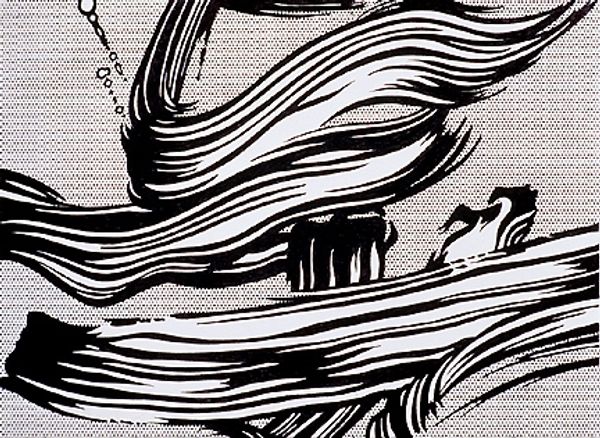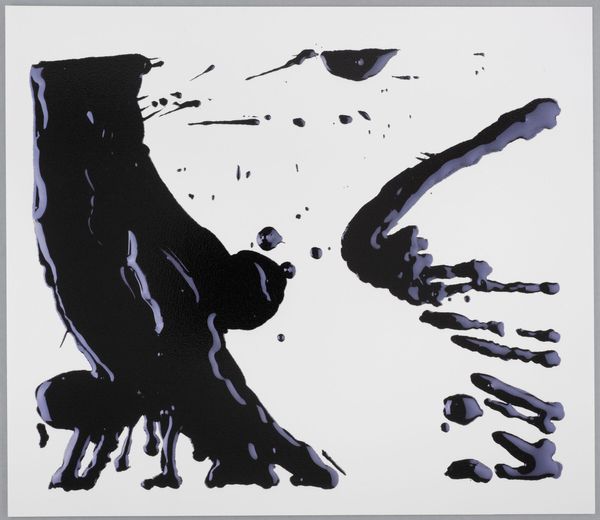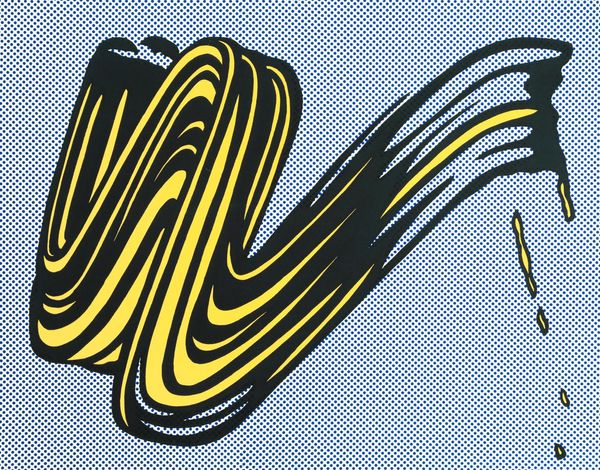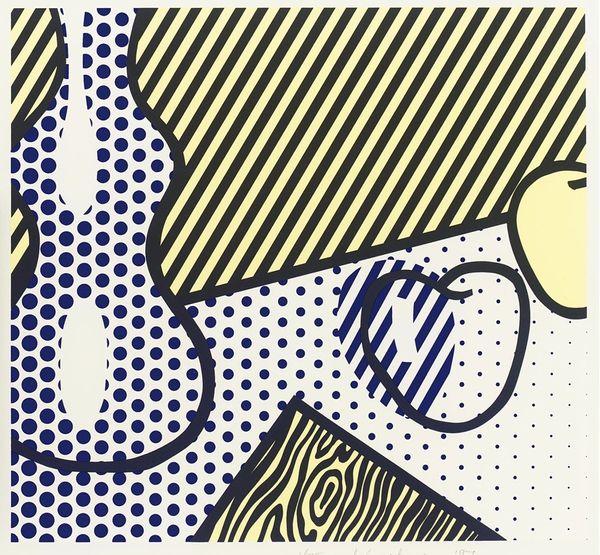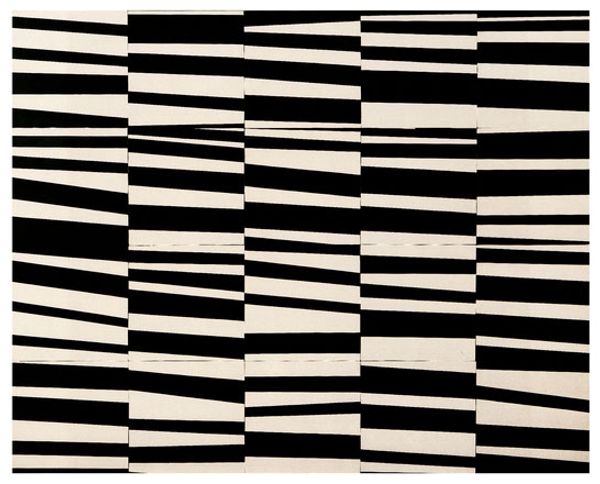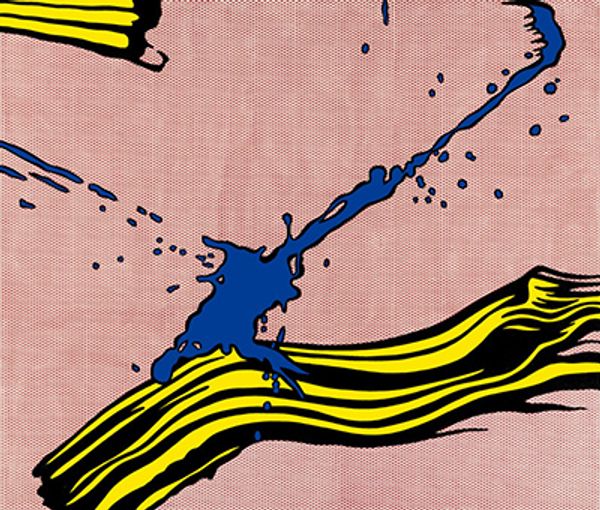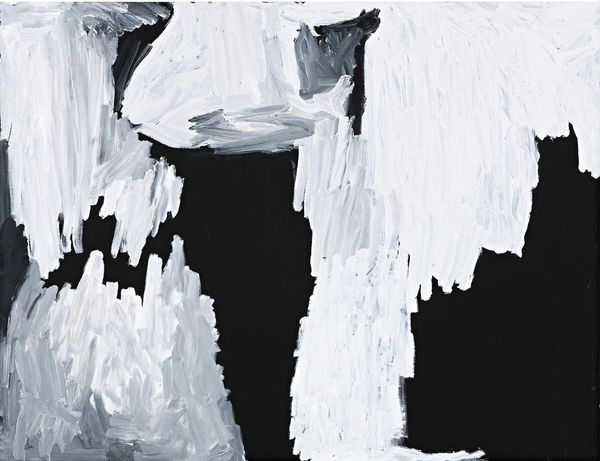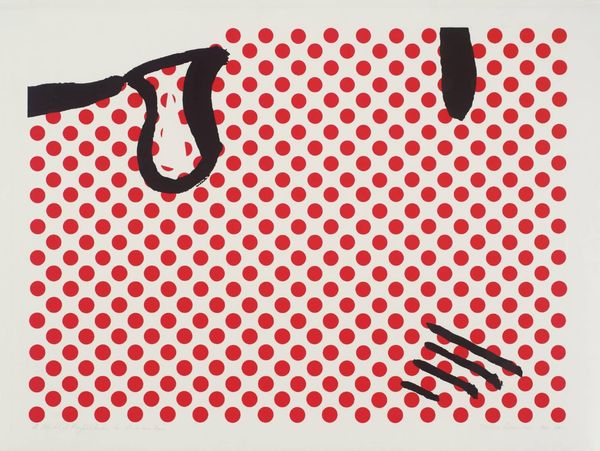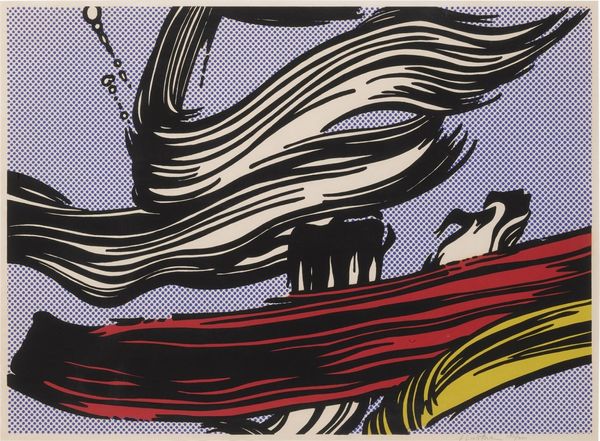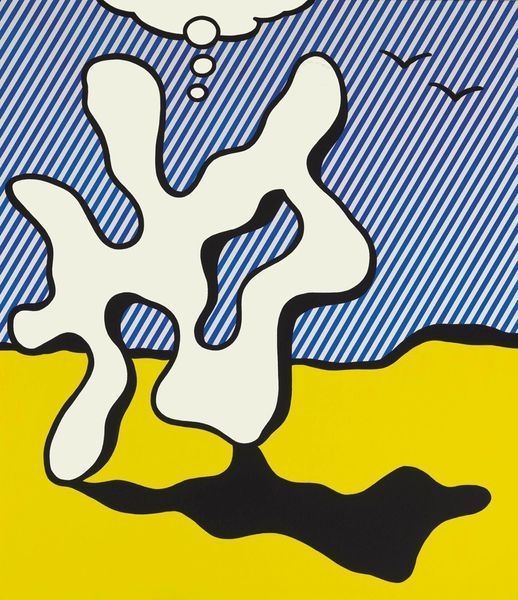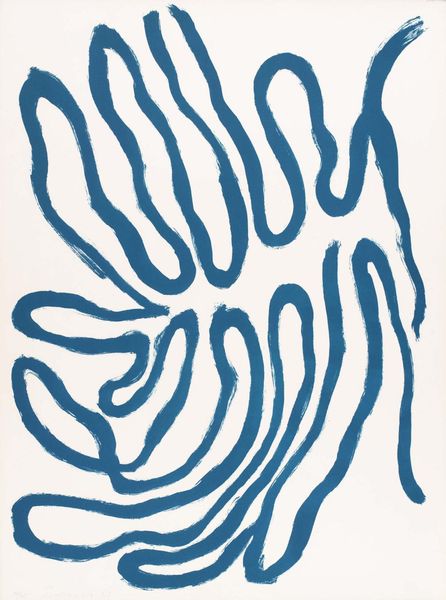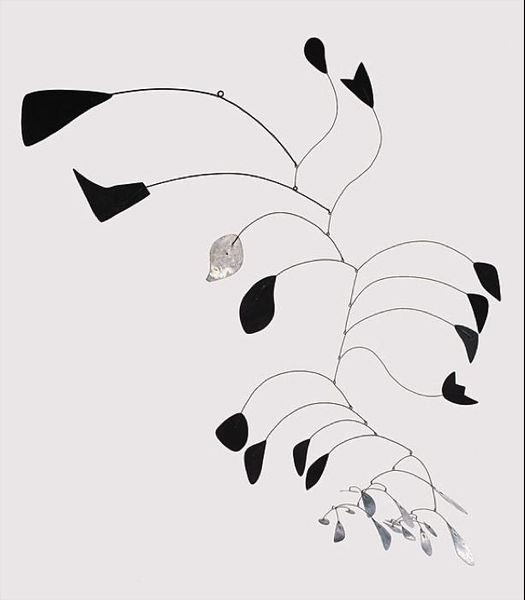
painting, acrylic-paint
#
pop art-esque
#
abstract-expressionism
#
painting
#
appropriation
#
acrylic-paint
#
form
#
geometric
#
abstraction
#
pop-art
#
line
#
modernism
Copyright: Roy Lichtenstein,Fair Use
Editor: Here we have Roy Lichtenstein's "White Brushstroke I" from 1965. It's a vibrant, almost cartoonish, depiction of a brushstroke rendered in acrylic paint. The bold black outlines against that field of blue Ben-Day dots is striking! How do we interpret the image within art history? Curator: Lichtenstein's piece serves as a commentary on the commodification of art and the mass production of imagery in the 1960s. The "heroic" brushstroke, a hallmark of Abstract Expressionism, is here reproduced, enlarged, and presented in a style reminiscent of commercial printing. Consider what Lichtenstein is saying about the role of the artist in society by elevating and ironizing the mark of the artist itself. Editor: So, is Lichtenstein making a statement about the relationship between 'high' art and 'low' culture? Curator: Exactly! By appropriating a painterly gesture, and reproducing it using techniques associated with mass media, he blurs the boundaries between the unique artwork and its reproduction. How do museums like this one affect that blurring, displaying what were, in a way, readymade artworks? Is the gesture of gestural abstraction even possible after Pop Art? Editor: I see how the piece forces us to question the value we place on originality and authenticity in art, especially within institutions. Curator: Precisely. And it pushes us to confront the institutional framework that bestows value and meaning on objects. Think of Clement Greenberg's influence, favoring certain American abstraction—Lichtenstein is deliberately challenging this system. Editor: It's fascinating to see how the work's historical context sheds light on its cultural critique. Now, seeing the work as an institutional critique makes it a lot more impactful. Thanks! Curator: Agreed, this artwork is deceptively simple and it's the multilayered dialogue between art history, culture, and artistic practice that makes the work thought-provoking.
Comments
No comments
Be the first to comment and join the conversation on the ultimate creative platform.

